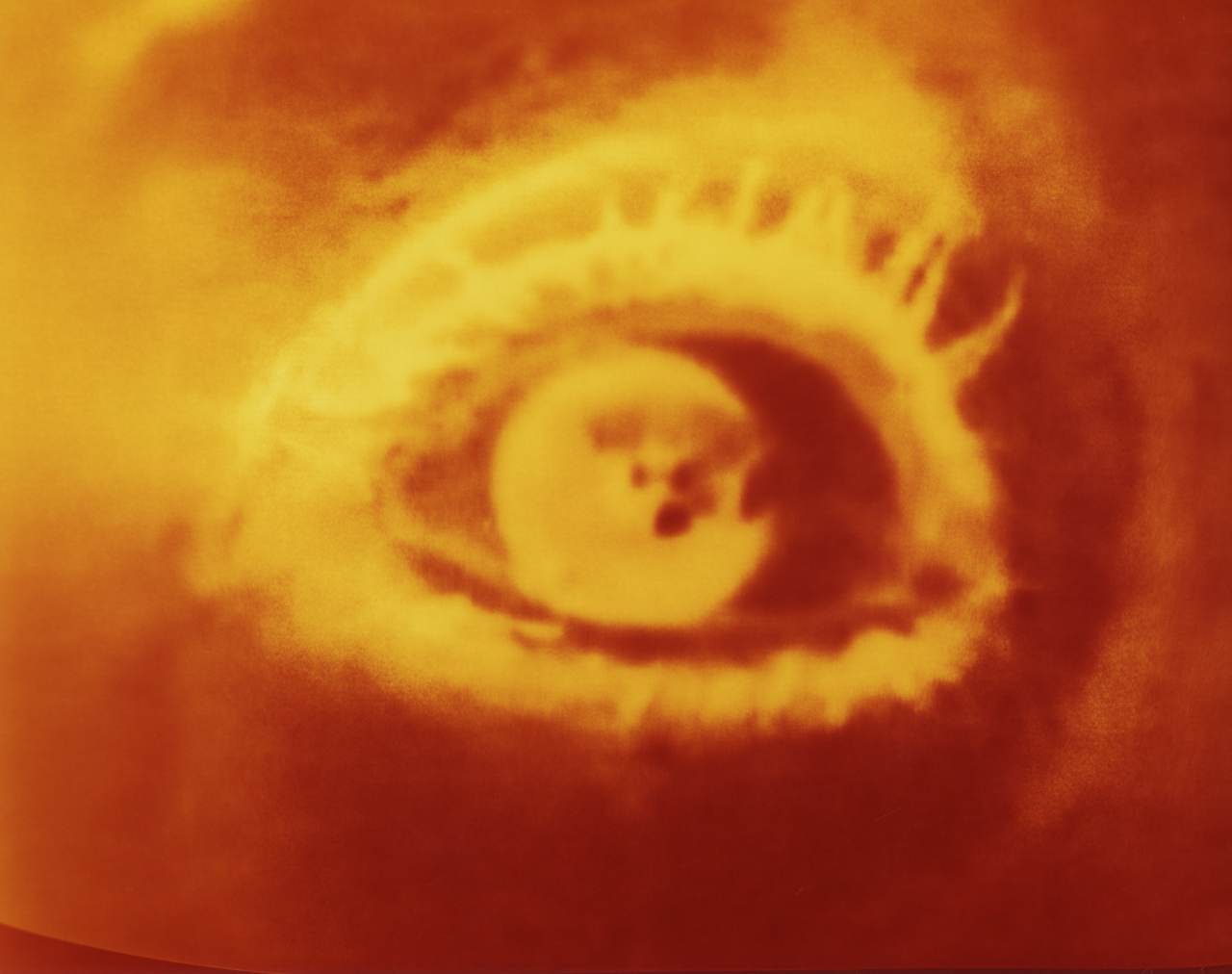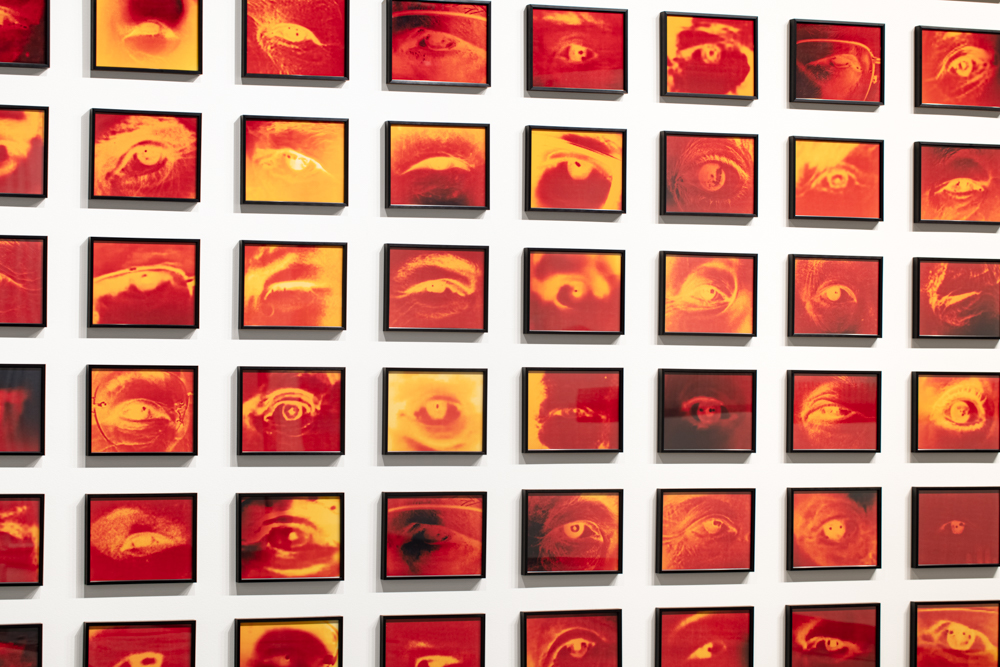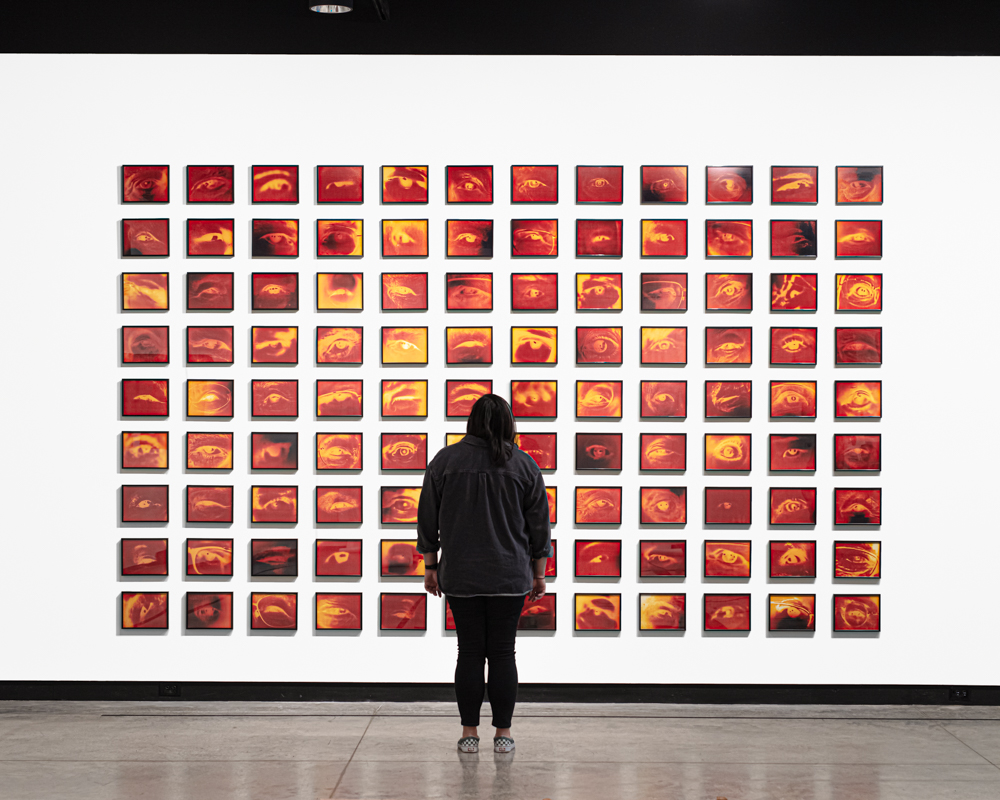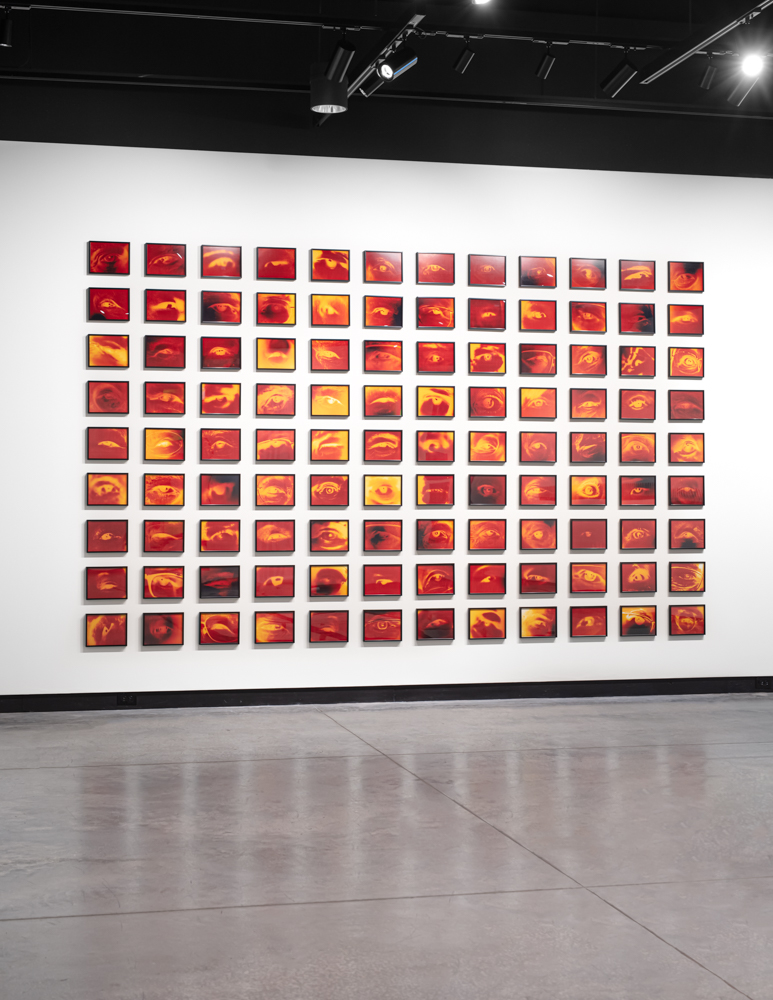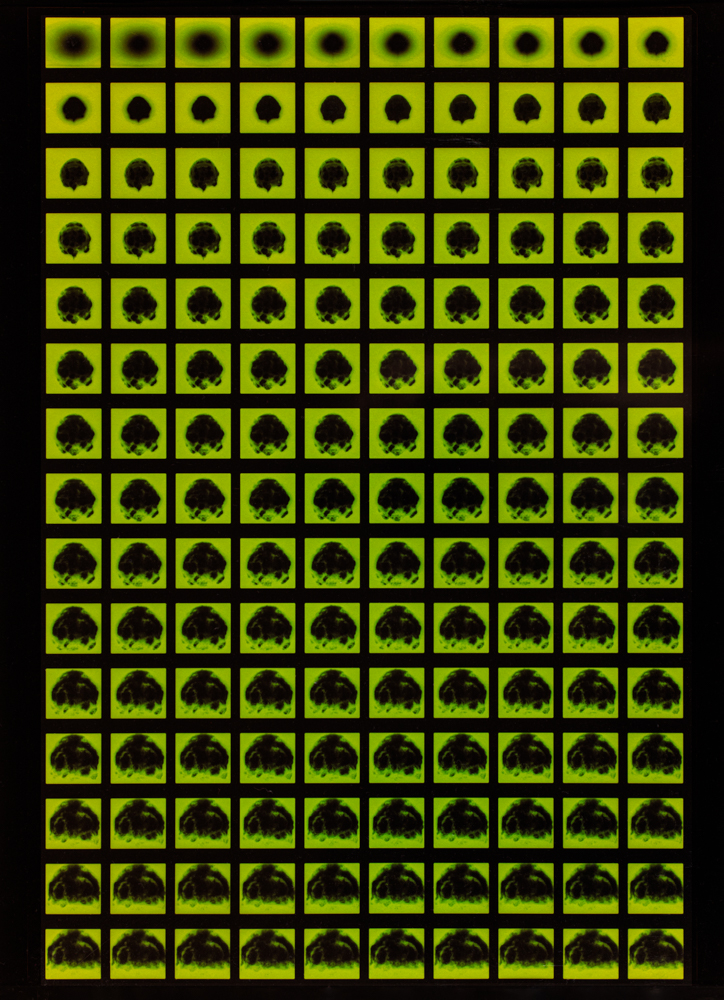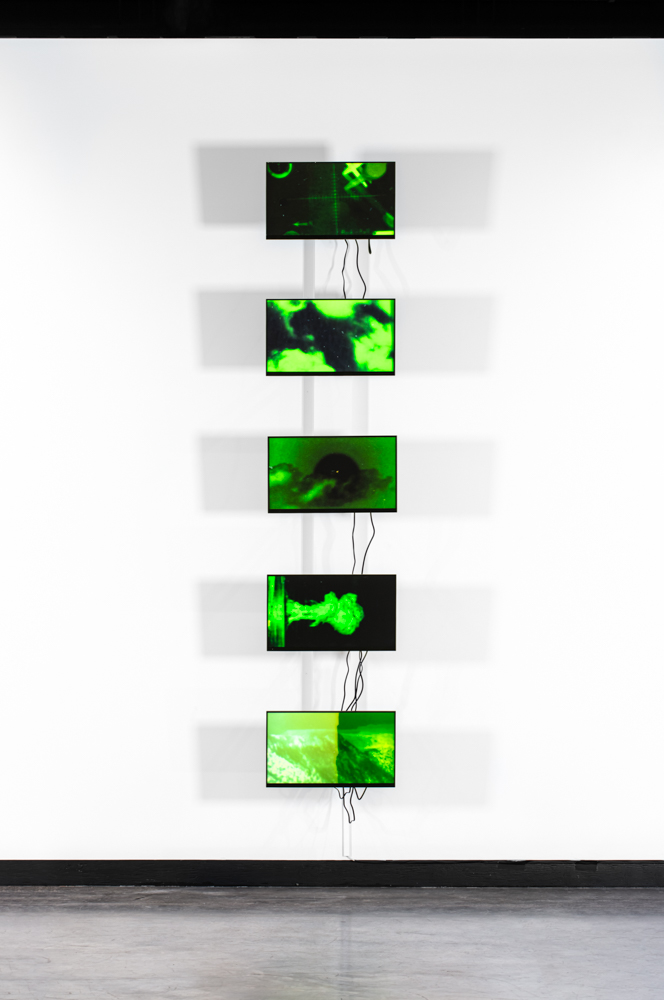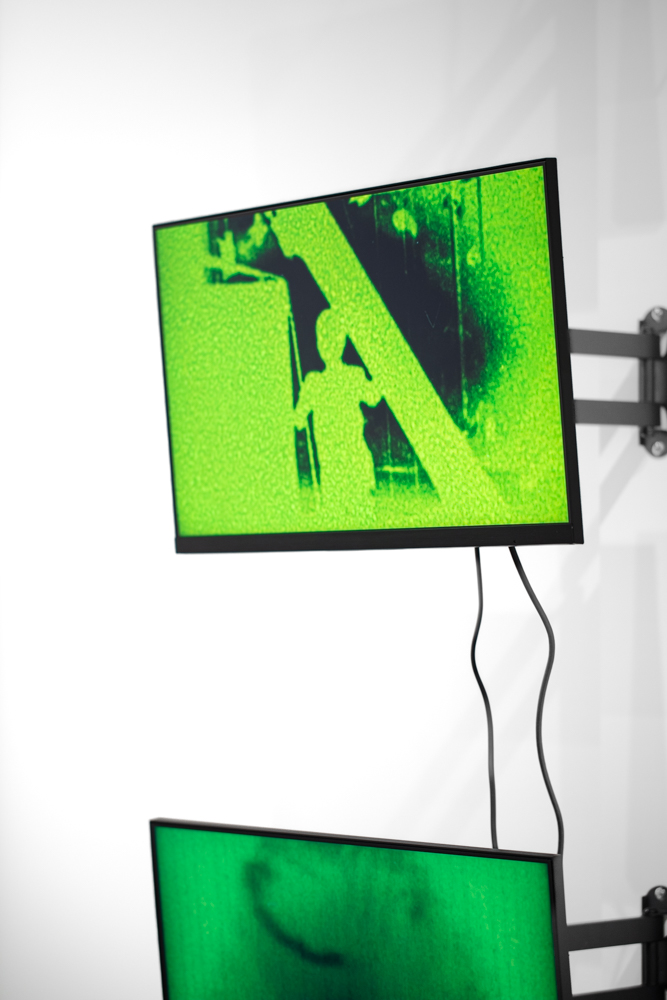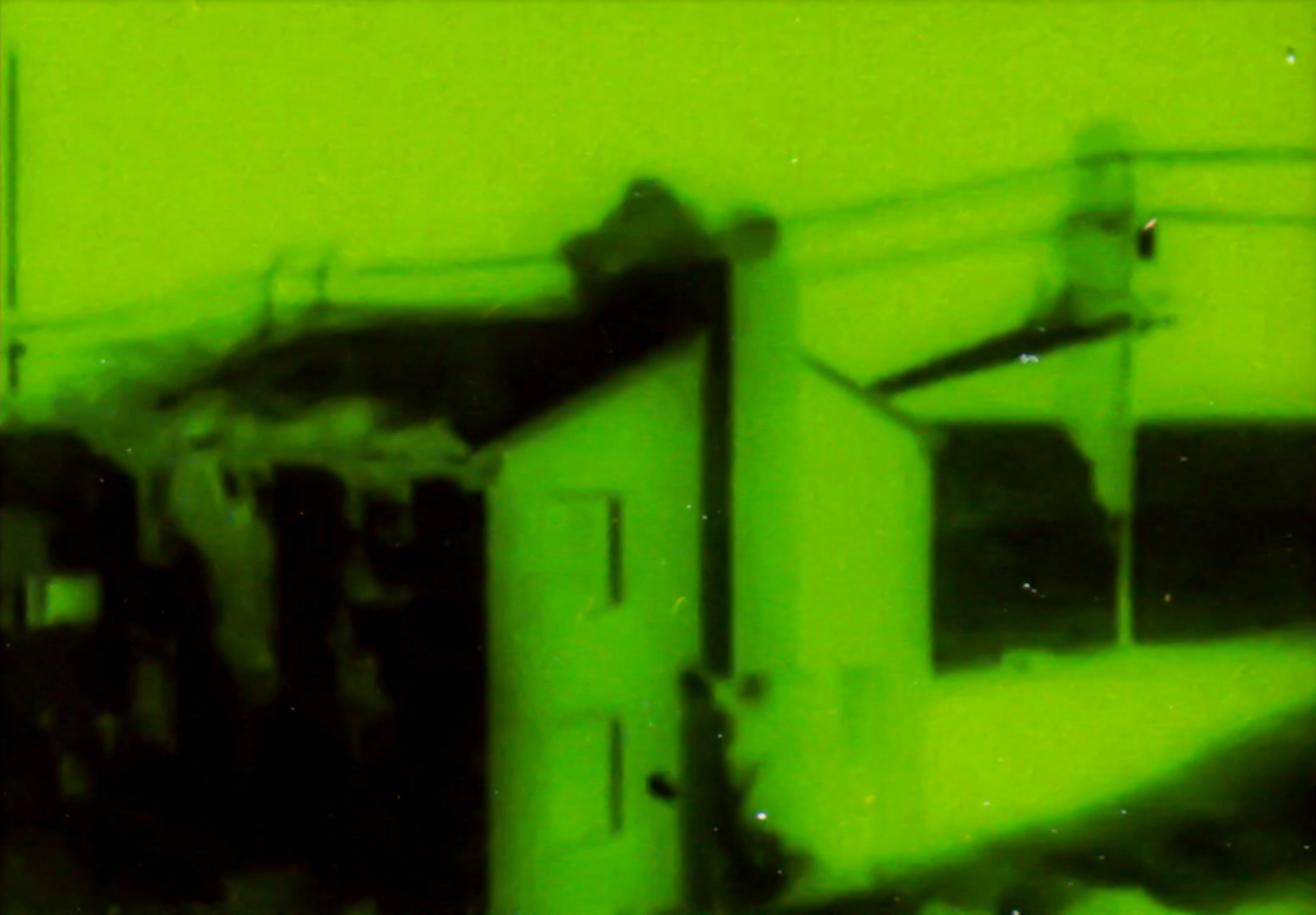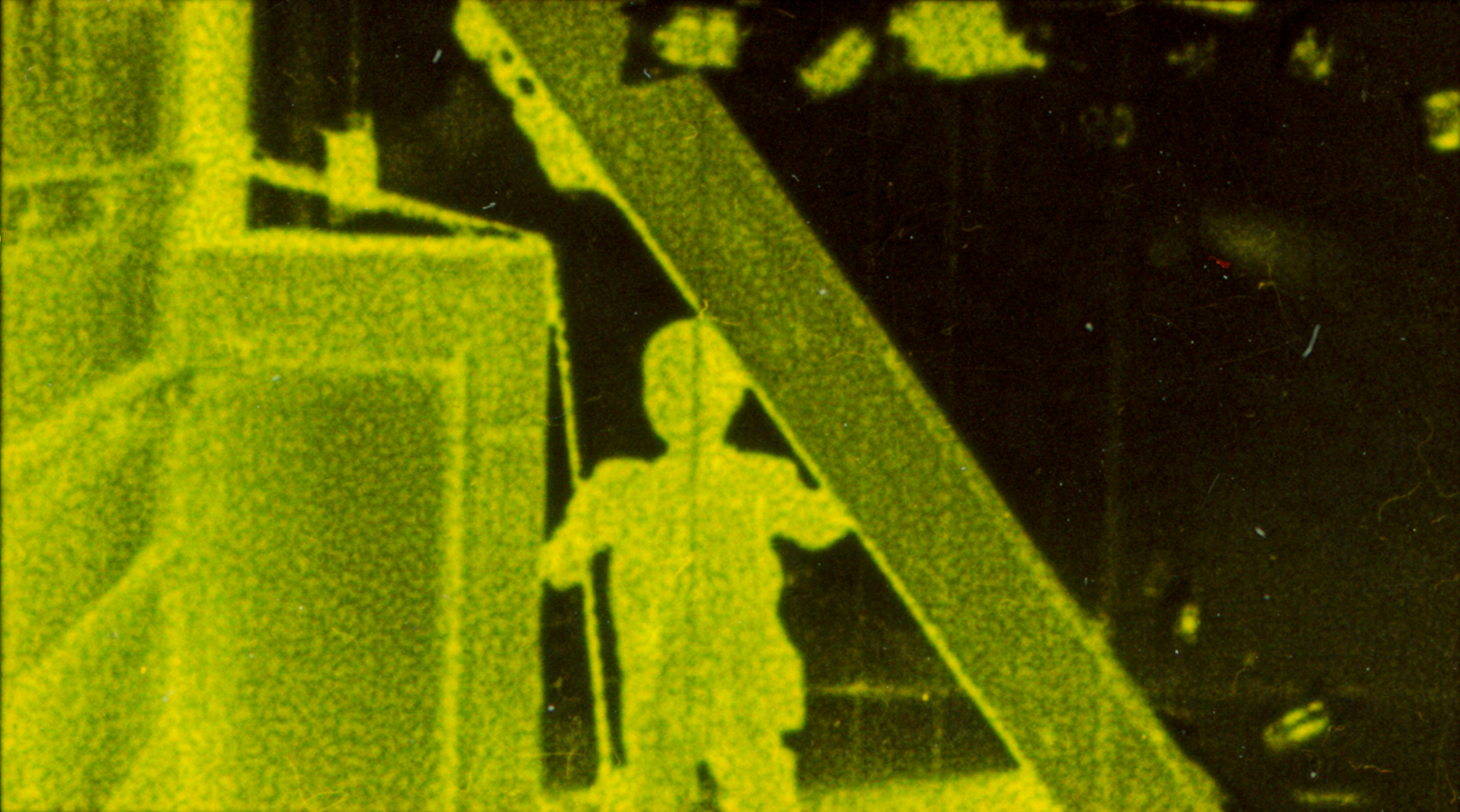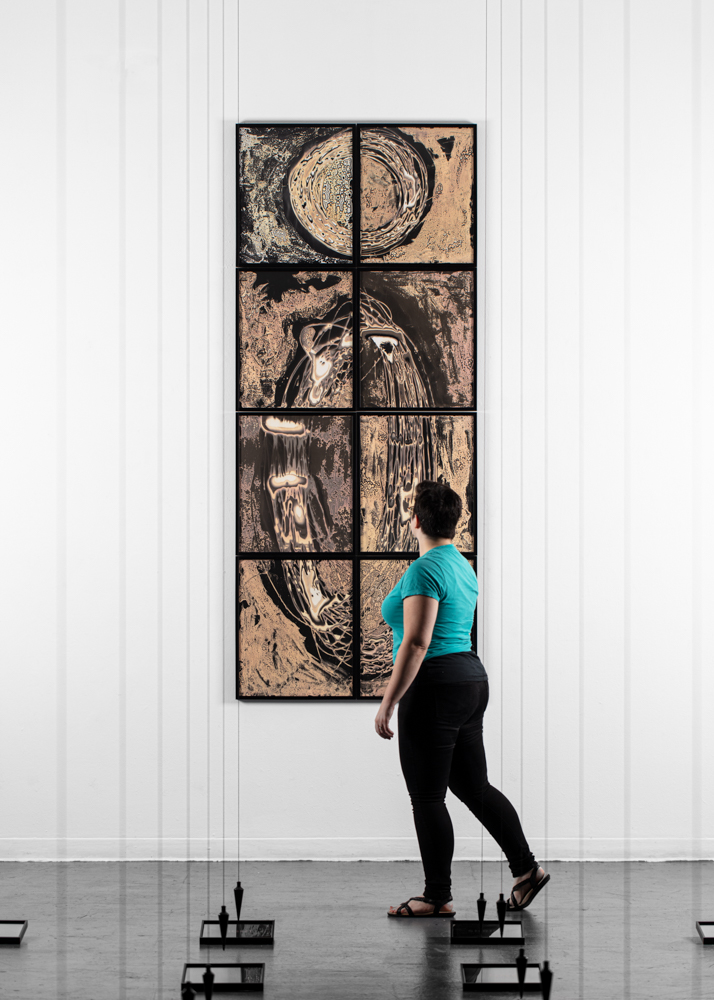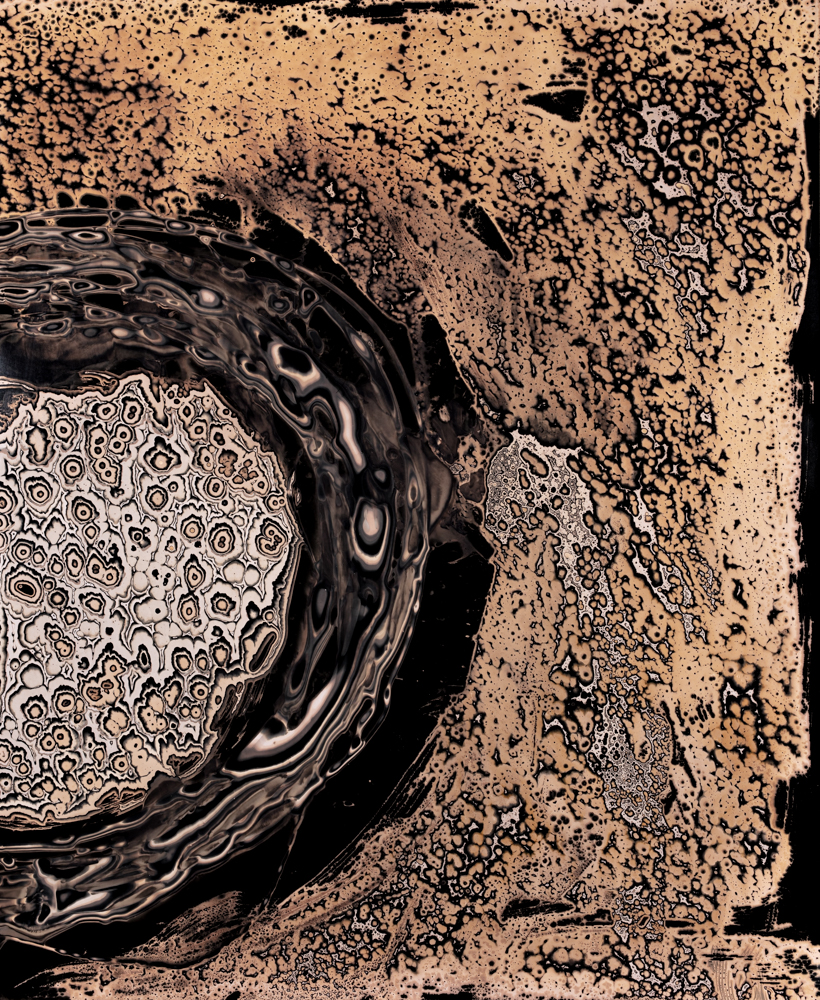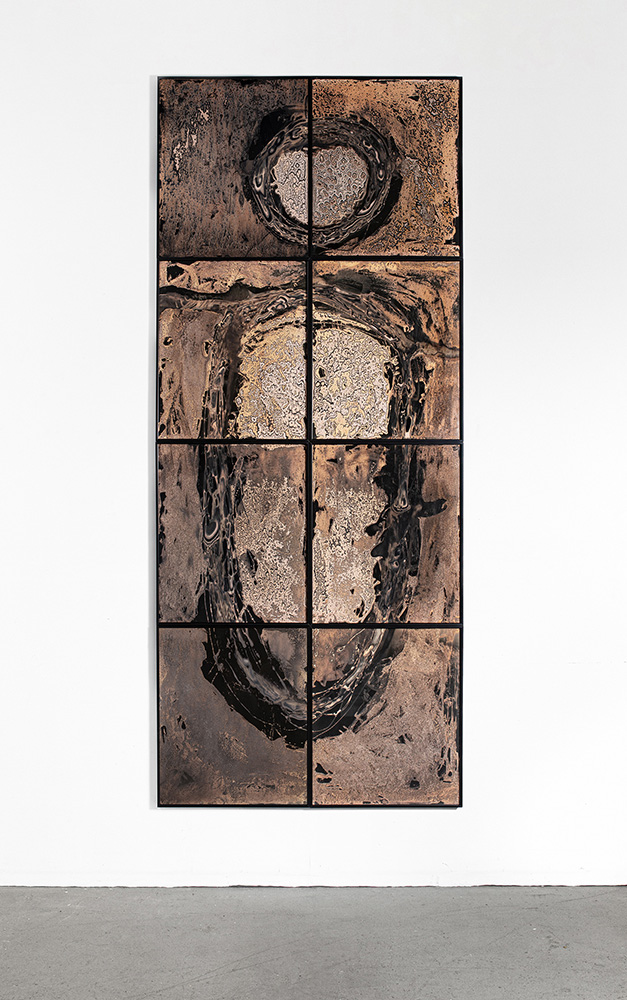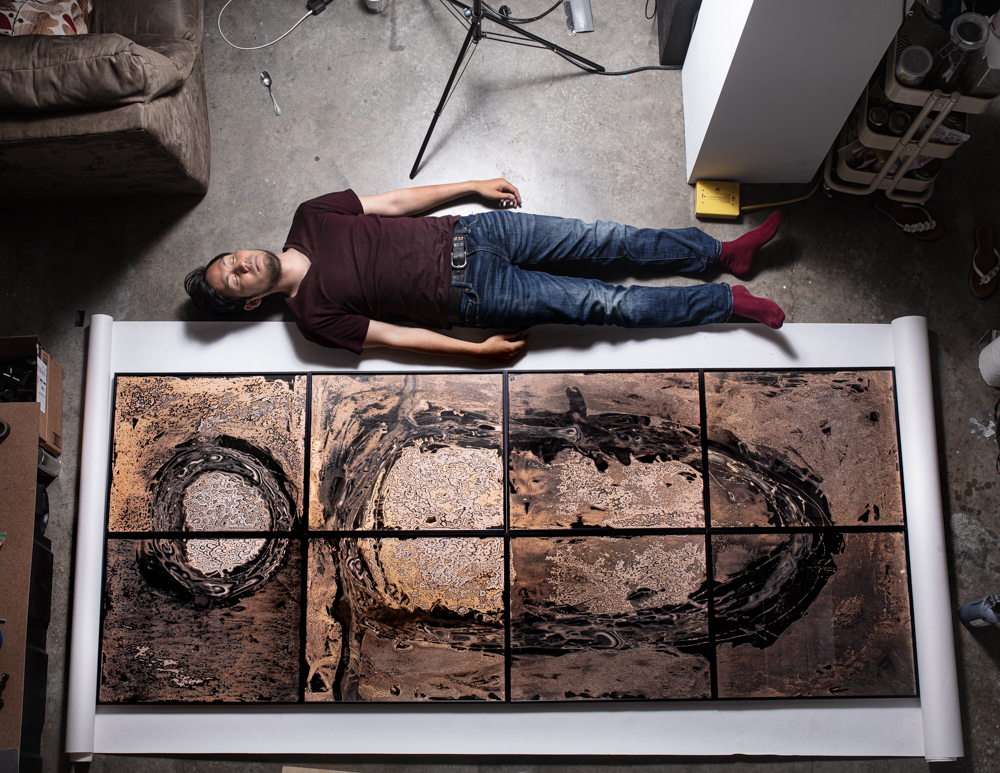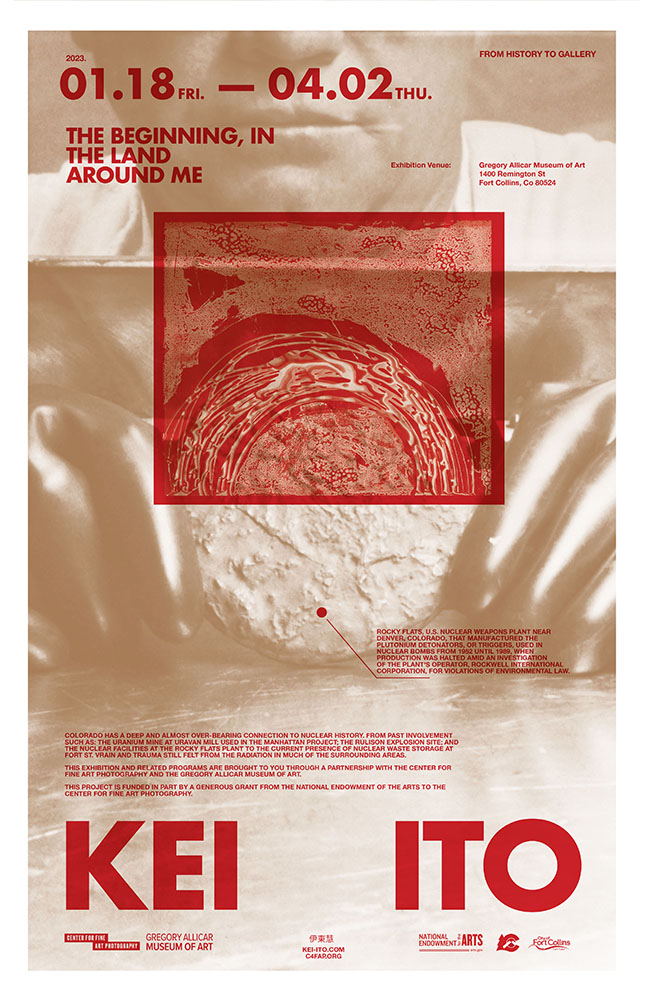Atomic Reactions: Kei Ito
Kei Ito’s work sears into the conscience, recalling the human toll of atomic war. Ito uses astute metaphors in his installations which embody visible and invisible consequences of the development and use of the bomb. In August 1945, the United States detonated two atomic bombs over the Japanese cities of Hiroshima and Nagasaki to ostensibly hasten the end of World War II. The bombings and aftermath killed between 129,000 and 226,000 people, most of whom were civilians. Ito’s grandfather, a survivor of the Hiroshima blast, became an anti-nuclear activist and later succumbed to cancer. Two generations on, Ito’s images and installations viscerally connect the past to the present—where eyes, repeated images at human scale, acid colorations and interactions — bringing the destructive legacies of nuclear war into a shared human experience.
The artist shares his statement:
I am an interdisciplinary installation artist working primarily with photographic media and sculpture. My work addresses issues of deep intergenerational loss and connections as I explore the materiality and experimental processes of photography and artifacts. My practice, fundamentally rooted in the trauma and legacy passed down from my late grandfather – a survivor of the atomic bombing of Hiroshima, meditates on the complexity of my identity and heritage through examining the past, current trajectories, and visualizing the invisible such as radiation, memory and life/death.
The direction of my work expands upon my heritage to excavate history for the stories that were omitted or erased. This collection of work you see here spans across multiple projects; from an investigation into the personal impact of the bombing of Hiroshima and the resulting decades of nuclear testing afterwards to the larger questioning of humanity’s penchants for war. By utilizing the personal to speak to a larger collective, my work creates a roadmap for a better future, for we can only see where we are going by looking at where we have been.
The projects here include: Eye Who Witnessed, Aborning New Light, and Burning Away.
Eye Who Witnessed is a compilation of C-print photograms depicting 108 eyes. This collection of 54 American Downwinders and 54 Japanese a-bomb victims stares out unblinking, homogeneous and anonymous.
Growing up in Japan, I noticed that many thought the bombing victims were necessary sacrifices for peace; after moving to America, Ito heard the same sentiments about Downwinders. Some of the first victims were Americans who worked the first tests unaware of the deadly and invisible threat of radiation. After the war, the US government continued nuclear testing across the nation and these forgotten American casualties, civilians living around testing sites, are now known as Downwinders.
The number 108 is a number with ritual significance in Japanese Buddhism; to mark the Japanese New Year, bells toll 108 times, ridding us of our evil passions and desires, and purifying our souls, which can be seen as an act of redemption.
The original images were curated from books, video interviews and images I gathered from my own family album. The prints were then mixed-up before installing, making it unclear on which one is a Japanese or a US victim; nuclear weapons affect everyone the same no matter their nationality. As they collectively stare back at us, their eyes become a monument of nameless atomic testimonies. Will we too become a witness of a radiated light and be sacrificed for the next so-called “peace”?
Originally created as a temporal installation during my artist residency at MASS MoCA, this installation later was included in my solo exhibition, The Beginning, in the land around me, at the Gregory Allicar Museum of Art in collaboration with the Center for Fine Art Photography curated by Hamidah Glasgow.
Aborning New Light is a video installation from my larger New Light series. The visuals were mined from archives of nuclear testing on American soil. From the declassified nuclear testing film footage, the 1000s of film stills were printed onto transparencies, exposed onto light sensitive paper and finally, rescanning the processed prints back into a single film (sometimes objects like Godzilla figurines or Enola Gay toys were placed on the darkroom paper during the exposure process). This new video, now with my own hand and process creating an artistic intervention, is also played in reverse, the explosions shrinking instead of expanding. Houses, school buses, and mannequins are reconstructed before our eyes while time counts down to a period before nuclear weapons and their extreme proliferation across the globe.
Lastly, Burning Away is a long term project started in November 2020 which utilized honey and various oils on a sun-fused silver gelatin paper in a recreation of the numerous stories by survivors seeking to heal the charred trauma.
The materials used to form this imagery is rooted in my generational trauma of the Atomic Bombing of Hiroshima, which claimed many lives including my grandfather. The moment the bomb exploded in the sky of Hiroshima, it created a giant fire-ball reaching the surface temperature of 7,700 degrees matching the temperature of the Sun itself. The heat wave vaporized the people near ground zero and left devastating burns on those left alive. I found many stories of survivors treating the burns with honey, cooking oil and even motor oil due to the scarcity of even the most basic medicine.
The blinding heat was indeed a great threat; however, the invisible threat of radiation is what makes nuclear weapons truly devastating. Many of the survivors were unaware of the invisible threat that was implanted within their bodies, like a second bomb waiting to go off. It was their children and grandchildren who were witnesses of the effect of radiation.
By utilizing the same substances described in their accounts to desperately heal the charred trauma, these prints symbolize not only the memory of nuclear fire, but also the disappearing voices of the survivors. The pattern of the print depends on the type of oil used on the paper, creating various microscopic like images that may remind one of cancer cells.
All of my work examines materiality – especially influenced by the photographic process – the hidden stories of victims of nuclear weapons and war, and the overarching connections we all have in our shared humanity. Now is the time to look back, address our histories, allow these stories back into the narrative and to dismantle our current mythology of ourselves – a mythology that is being fought over to be upheld and whose consequences we face everyday.
BC: Was there a turning point in your trajectory when you felt compelled to create work around what you describe as our nuclear heritage?
Absolutely. The turning point in my trajectory came during my MFA program at the Maryland Institute College of Art. It was a time when tensions between North Korea and the United States regarding nuclear testing and war were escalating. This environment, coupled with my personal connection as a survivor’s descendant, stirred a deep compulsion within me to create artworks centered around nuclear issues. This desire intensified during my Marva and John Warnock Biennial Artist in Residency at the University of Utah. Having access to extensive Downwinder archives and meeting victims in person across the Southwest catalyzed my recent works. It was in these encounters that I recognized the imperative not only to address my own familial trauma but also to give voice to a collective and shared irradiated trauma that extends far beyond individual experiences bonded by the shared, transnational trauma caused by radiation, transcending borders and identities.
BC: How do you view collaboration in your practice?
Collaboration is a cornerstone of my artistic practice, extending beyond traditional artistic partnerships. While I’ve collaborated with artists like sound artist Andrew Paul Keiper, whose grandfather was an engineer working on the Manhattan Project, to introduce multi-perspective narratives into my work, my collaborative approach extends to communities affected by nuclear issues. Many of my artworks manifest as large-scale site-specific installations, involving local institutions, community groups, activists, scientists, and even the physical spaces themselves. These collaborations influence and shape my artistic expression, creating spaces that both memorialize losses from these issues and serve as platforms for audiences to engage with pertinent social concerns.
BC: Photography played a critical role in the development, justification and use of the bomb in Japan. How do you use the photographic medium — from your camera-less images to your incorporation of archival imagery — in response to this history?
Photography has historically been a powerful tool for documenting and disseminating information, shaping public perception, and conveying historical events. In the context of the development and use of nuclear weapons, photography played a crucial role in documenting the catastrophic aftermath of the bombings of Hiroshima and Nagaski, as well as in promoting certain narratives and agendas.
In response to the history, my artistic approach to the photographic medium is deeply nuanced and intentional. I employ a variety of techniques, from cameraless images to incorporating archival imagery, to evoke and challenge the legacy of nuclear weapons.
The decision to use abstraction and historical archives as primary tools stems from the intangible themes I explore in my work – memory, trauma, radiation, and the liminal space between life and death. I’ve departed from conventional photography and delved into cameraless techniques, like using light and shadow to capture the essence of these invisible matters. This methodology symbolizes my role as a medium between past and present, allowing viewers to interact with these intangible themes.
How does work that contemplates the past inform our current moment?
My artistic practice serves as a bridge between past and present, offering insights into our contemporary landscape through a historical lens. By excavating untold stories and challenging existing narratives, my work provides context to our current trajectory. Delving into deep intergenerational losses and connections, I shed light on overlooked histories and the consequences of human actions. These contemplations inform our present by urging us to confront the repercussions of past decisions, fostering a deeper understanding of our shared humanity. This confrontation with the past encourages us to dismantle myths and narratives that hinder progress, allowing for a more informed and empathetic perspective on our current moment.
Ultimately, the work that contemplates the past serves as a bridge between history and the present, offering a more holistic understanding of our complex world. By acknowledging the interplay between historical events and our current moment, we gain insights that enable us to make informed decisions, foster positive change, and contribute to a better future. This awareness can drive us to be more conscious and deliberate in our actions today, encouraging us to take responsibility for our role in shaping the trajectory of our world and consider the impact of our choices on future generations.
Kei Ito is a Baltimore based interdisciplinary artist working primarily with photographic media, sculpture, and installation art. Ito received his BFA from Rochester Institute of Technology followed by his MFA from Maryland Institute College of Art.
His many solo and group exhibitions can be read in reviews and articles published by the Washington Post Magazine, Hyperallergic, BBC Culture & Art, BmoreArt, ArtMaze Magazine, ESSE Magazine and various newspapers worldwide. Ito’s works are included in major institutional collections such as the Museum of Contemporary Photography (Chicago, IL), the Norton Museum of Art (West Palm Beach, FL), the Gregory Allicar Museum of Art(Fort Collins, CO), En Foco (NYC, NY), and the Eskenazi Museum of Art (Bloomington, IN). Ito was included in the recent Critical Mass’s Top 50, the Silver List, and Center for Photographic Art’s Artist Grant.
Ito’s notable upcoming exhibitions include solo exhibitions at: the Hilliard Art Museum, Lafayette, LA (August 2023); Visart, Rockville, MD (November 2023); and the Georgia Museum of Art, Athens, GA (February 2024).
Instagram: @kei.ito.art
Posts on Lenscratch may not be reproduced without the permission of the Lenscratch staff and the photographer.
Recommended
-
Ragne Kristine Sigmond: Portraits of Painterly LightDecember 2nd, 2025
-
Mary Pat Reeve: Illuminating the NightDecember 1st, 2025
-
Ricardo Miguel Hernández: When the memory turns to dust and Beyond PainNovember 28th, 2025
-
Pamela Landau Connolly: Columbus DriveNovember 26th, 2025
-
MATERNAL LEGACIES: OUR MOTHERS OURSELVES EXHIBITIONNovember 20th, 2025

